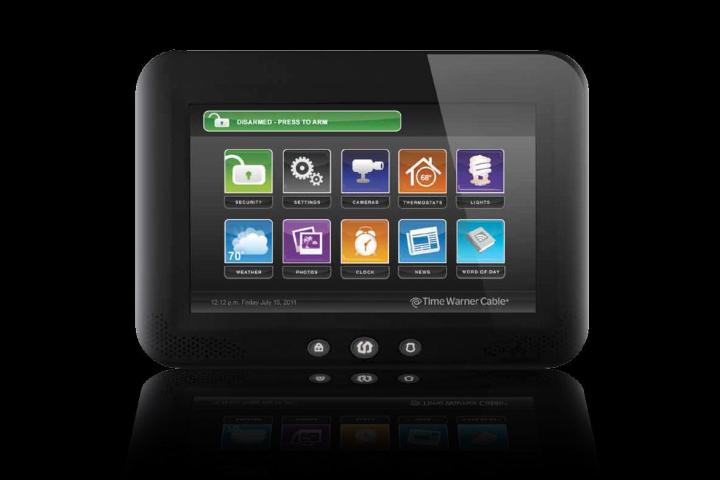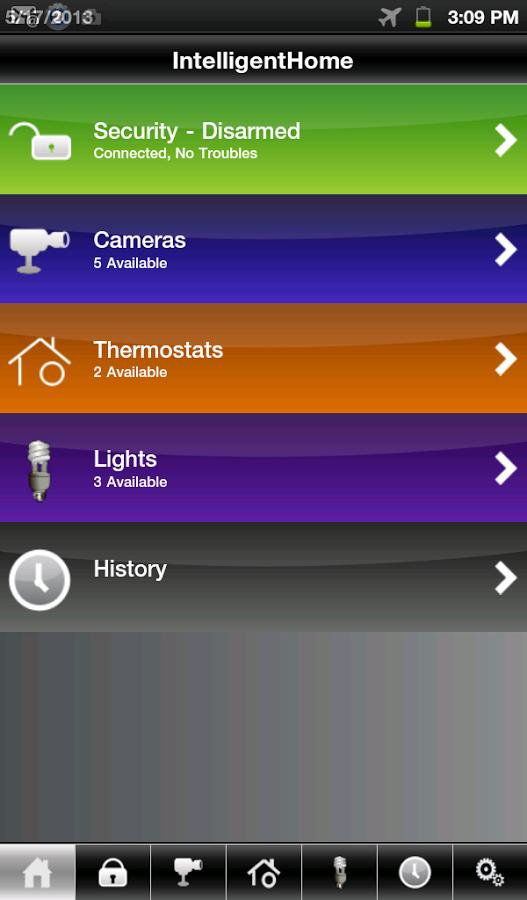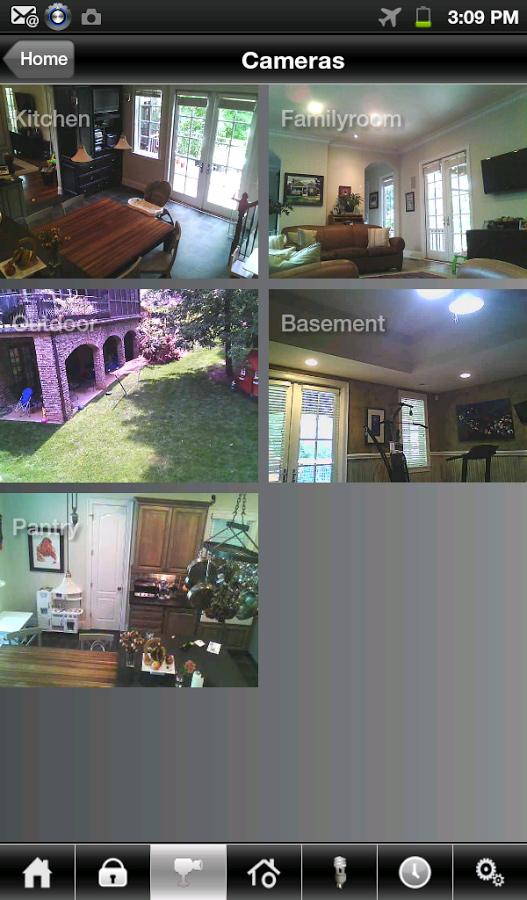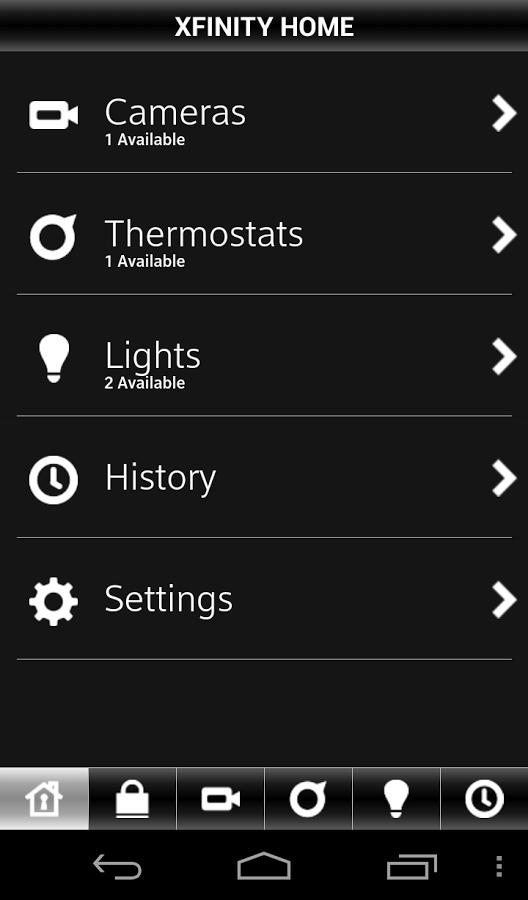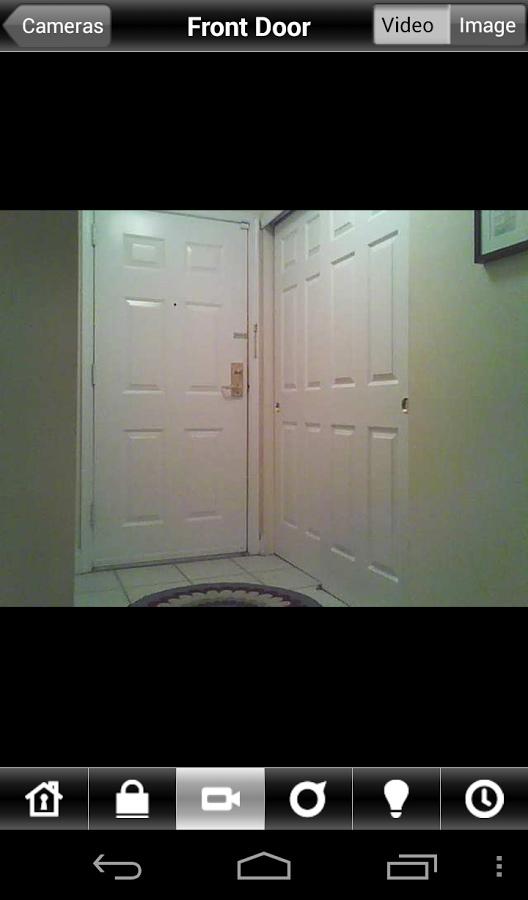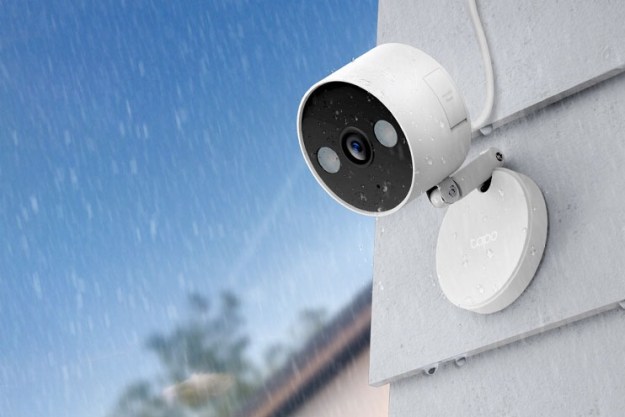
Like a modern proof of Newton’s Third Law of Motion – for every action there is an equal and opposite reaction – as more people cut the cord between them and their cable and satellite providers, those providers look for ways to retain customers and bring new customers into the fold. To maintain this delicate Yin and Yang balance (and, you know, make money), Warner and Comcast are looking beyond their traditional cable, telephone and Internet service offerings and getting into the world of security and automation.
Time Warner’s system, called IntelligentHome, is rolling out nationally and, according to Time Warner’s Website, “puts you in control of your home like never before.” Comcast is offering similar packages with its XFINITY Home Control and Home Secure systems.
Considering most of our relationships with most of our cable companies, it would be understandable if the idea of giving them even more control of your home gave you the malaria sweats. But before that happens, let’s see if these systems are truly smart or just another cable company cash grab.
What They Are
At its most basic, IntelligentHome begins life as a security system. Whether you purchase the Select, Premier or Ultra package (more on them later), you receive the same in-home touchscreen controller, which is the heart, brains, and soul of the system.
While Comcast’s Home Secure system is very similar from a hardware, monitoring and security standpoint, they also offer a lower-priced solution that does not offer any security monitoring, but provides access to automation and control features.
Both companies use software provided by iControl Networks and the touchscreens appear to be the SMC Networks RB5701-Z panel, a 7-inch panel with 800×480 resolution running Android OS (we haven’t been able to confirm). The panel has redundant connections using built-in cellular and 802.11g WiFi, as well as hardwired broadband 10/100BaseT Ethernet, meaning that it should be able to phone home in the event of an emergency. “Home” in this case means Time Warner’s Alarm Association 5-Diamond Certified Central Station, or a UL-certified central station for XFINITY, both of which can then call you and/or dispatch the police or fire departments.
While it is wireless, it is not meant to be a tablet that you take with you and stroll around town, watching movies and playing Candy Crush during your morning commute. Since it’s the hub of your security system, it should spend the majority of its life on the docking/charging cradle. The touchscreen features a 24-hour battery back-up in case power to the home is lost and has an internal siren to hopefully scare off the intruders before they steal your new PS4 or spray paint “ALL WORK AND NO PLAY MAKES JACK A DULL BOY” across your living room walls. While it also features the anti-tamper sensors necessary to be compliant as a home security system, be advised that you’re likely on your own in the event of an Ocean’s 11 style EMP attack.
Besides being the alarm panel and control hub for the home, the touchscreen can also display live, full-motion video from any connected cameras and can run weather, news and sports apps. If you like a personal touch, it can also serve as a digital picture frame showing pictures of your family. If you like an impersonal touch, have it display pictures of someone else’s family. The panel is not there to cast judgment.
Beyond the touchscreen, you can also control and monitor your home when away via the magic of the Internet using a computer or by using an app on a smartphone/tablet.
It’s not all stern assurances of safety with IntelligentHome and Home Secure, though; there are also a few of the whiz-bang party tricks you’d expect of “home automation,” including the ability to turn lights on and off and raise or lower your home’s thermostat from the comfort of your couch. Or bed. Or toilet.
What You Get
As mentioned, Time Warner offers three packages: Select ($99.99), Premier ($399.99) and for the man who likes to purchases everything magnum-sized, Ultra ($699.99). All packages include the touchscreen along with various sensors and automation features and offer savings over purchasing the items a la carte.
The value-meal, Select package includes two door/window sensors and a motion sensor. This is enough to have a very basic security system, and if purchased separately, these items would be $270.
The Premier system adds two additional door/window sensors, a key fob controller and an indoor camera, which would sell for $630 individually.
Let’s see if these systems are truly smart or just another cable company cash grab.
Comcast charges a higher monthly fee and requires a longer commitment. For example, the XFINITY Home Secure 300 package includes three door/window sensors, one motion sensor and one wireless keypad and has installation “starting at $99.” The Home Secure 350 plan adds two indoor/outdoor cameras, two lighting controllers and either a thermostat or additional camera and has installation “starting at $399.”
Comcast also offers five Home Control “starter packs” that range from the $99.95 Basic to the $349.95 Total.
Unlike the touchscreen, the other modules are yours to keep with either company should you stop subscribing to the service, however their continued usefulness without the main controller would be questionable.
If you already own a security system from another company but love the idea of cutting ties with your current provider and adding some smart features, both companies have packages that include the touchscreen (again, not yours to keep) and an adapter that attaches to the existing security system. This would enable you to manage the existing security system using the fancy touchscreen, web site and mobile app and have access to cameras, thermostats, lights, etc. if you decide to pony up and buy them.
What You Can Add
Feeling like an individual that can’t be molded to conform to one of the cable company’s preset societal norms, and that you have to customize your own system? No problem. In fact, both Time Warner and Comcast offer multiple additional modules to configure your system to let your home be all that it can be. The modules that are currently available include:
| TWC | Comcast | |
| Door/Window Sensor | $69.99 | $49.95 |
| Motion Detector | $149.99 | $49.95 |
| Key Fob | $99.99 | $69.95 |
| Indoor Camera | $99.99 | $89.95 |
| Indoor/Outdoor Camera | $149.99 | $129.95 |
| Thermostat | $124.99 | $129.95 |
| Keypad | $99.99 | $89.95 |
| Smoke/Heat Detector | $149.99 | $89.95 |
| Glass Break Detector | $149.99 | $129.95 |
| Light Switch | $99.99 | $89.95 |
| Carbon Monoxide Detector | $119.99 | $89.95 |
| Barrier Break Detector | $74.99/NA | NA |
| Flood/Water Detector | $59.99 | $49.95 |
| Lamp/Appliance Adapter | $49.99 | $69.95 |
In addition to these, Time Warner plans on releasing new devices every six months and, as IntelligentHome is built on an open architecture, the company is actively encouraging third party device integration.
Time Warner’s system is currently limited to a maximum of 48 devices (47 sensors plus the panel), but that will be increased to 64 in the next few months. Both companies’ systems currently support a maximum of six cameras.
Installing Them
Both company’s security and automation sensors link back to the touch panel using either 802.11 WiFi or Zigbee Home Automation Standard Version 1.2 (a mesh network communication protocol similar to Z-Wave), meaning the entire system is wireless. This makes installation a much easier proposition and means that it should be retrofittable into nearly any home.
Time Warner’s typical installation fee is $99, but there is usually a promo where this charge is waved. Comcast installation starts at $99 for the smaller package and $399 for the larger. Currently, adding components to the system requires another visit from a technician, which will or won’t cost you depending on deals that may be available. Either way, the goal is for self installations of components in the near future.
Subscribing to Them
If you know anything about dealing with the cable company, then you know that they love them some recurring, monthly service charges, and this is where both companies hope to regenerate some of that lost cord-cutting revenue.

For instance, if you subscribe to one additional Time Warner service – phone or TV – beyond Internet, then the monthly rate is $33.99 plus tax. If you only have Internet, then the monthly fee is $39.99/tax. The system requires an 18-month agreement, with an early termination fee based on how much time is left on the contract if you decide to bail.
Comcast charges $39.95/tax a month for the Home Secure 300 plan and $49.95/tax a month for the Home Secure 350 plan which adds video camera monitoring and storage. You need to sign on for a 36-month hitch for either system. They do offer a 30-day money back guarantee where you can cancel with no penalty and be refunded all service fees and installation charges.
Keeping an Eye on it
You can view live video on the touch panel – say a camera at the front door to help you decide whether or not to answer based on if the Girl Scouts brought those cases of Thin Mints you asked for or not. (Look, I don’t want to hear about your Do-si-does or Samoas. You’ve either got the Thin Mints I asked for, or our business is summarily concluded forthwith!)
Of course, crime rarely happens while you’re watching it live. Time Warner stores footage off-site for later viewing. The system records 15-second snippets based on user-established events such as when the front door opens, or when a motion detector is tripped. A user could also initiate a 15-second recording on-demand; say to prove that the hot girl that everyone said you didn’t have a chance with happens to come over. The service will store up to 100 videos for 60 days but the same videos can be stored by users on their own PCs or hard drives as well. Stored video isn’t viewable on the touchscreen.

As with most standard video security systems, Time Warner has no access to viewing your video; their monitoring is limited to the sensors and the video is held, unviewed, until such a time as you might need it. Like after the neighbor’s kid leaves a flaming poo bag on the doorstep.
While Comcast does provide the ability to watch security camera footage, the offering is less specific in terms of the amount of video it will store and for how long, and the company did not respond to requests for clarification.
Programming it
What good is having all of this automation if you can’t have the hand-of-God kind of control capable of making it do all sorts of fantabulous things?! None! It’s none good!
Fortunately, Time Warner puts some “rule tools” on their IntelligentHome website allowing users to program in different “rules” for the system. There is a calendar rule that can have the system do something every day – or just on specific days – at specific times or around an astronomic time clock, such as turn lights on in the evening and off in the morning at sunrise.
“if the front door doesn’t open between X-Y time, send my daughter a text that she is busted.”
Finally, there are non-event based rules, such as if something doesn’t happen, do this. This could be useful for monitoring activity, such as your kids coming home at night with a “if the front door doesn’t open between X-Y time, send my daughter a text that she is busted.”
All of these are user programmable, meaning you can set up the system and configure it to your heart’s delight.
The Pros
Both IntelligentHome and Home Secure seem like perfect solutions for someone looking to add a basic security system and some automation to their home. This is especially true for anyone that is intimidated by technology or that’s just not interested in attempting anything DIY. Just call Time Warner or Comcast, pick out your package, write them a check, and you’re done.
Both systems include many of the features that people love about automation – lighting, HVAC, security – and allows easy remote video monitoring and comes with a pretty low price of entry to get started. Also, adding additional devices is relatively affordable and can be done in bits and pieces as your budget or needs allow.
Being wireless, it would be a very non-invasive install as well, meaning that you won’t have to deal with any exposed wiring or people drilling through walls or anything. Plus Time Warner is big enough that they should be able to put a lot of resources behind the system to continue expanding and improving the experience.
… and Cons
Historically, people’s experiences with the cable company are not always the most pleasant. In fact, saying that people dislike dealing with the cable company would be an understatement akin to, “I fell into a pit filled with Ebola monkeys hurling medical waste and infected feces at each other and now I’m having a bad day.”
As an example, a recent American Consumer Satisfaction Index survey found that Comcast and Time Warner had the lowest customer satisfaction of any industry in the United States. That’s any industry including airlines and health insurance companies, two of the greatest customer service scourges suffered upon mankind. Consumer Reports also ranked Time Warner 15th and Comcast 14th out of 17 rated cable companies, giving them their worst possible rating for “value.”
With the limited number of devices, neither system would work for larger homes. For example, automating your lighting alone could easily exceed 47 devices in a medium-large home and the six camera limit might be too few to cover some properties. Also, the systems currently have no way of interfacing with audio/video systems, meaning that you couldn’t press an “Entertain” button on the touch panel and have it turn on lights and your audio system.
Further, if you aren’t interested in the security and 24-hour monitoring aspect of either system, there are many other alternatives that would give you similar – or better – automation without requiring you to pay any monthly service charge. For instance a Nest thermostat would allow you to check and adjust your temperature anywhere in the world for free and there are any number of IP cameras you could purchase to view your home on a smartphone/tablet without any subscription required.
Conclusion
If you’ve been considering a home security installation or upgrade, there are some attractive components to IntelligentHome and XFINITY, although the former seems to be the better the deal. If you’re more interested in basic home automation functions and security isn’t a big factor for you, there are plenty of easy DIY products that can provide the same (or better) functionality of these systems without getting having to get even cozier with your cable provider or ISP. And, while we applaud Time Warner and Comcast for helping to bring home automation to the masses, we still don’t want to sleep with them.
